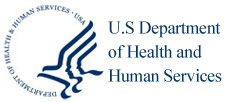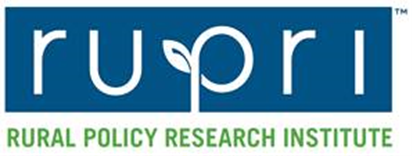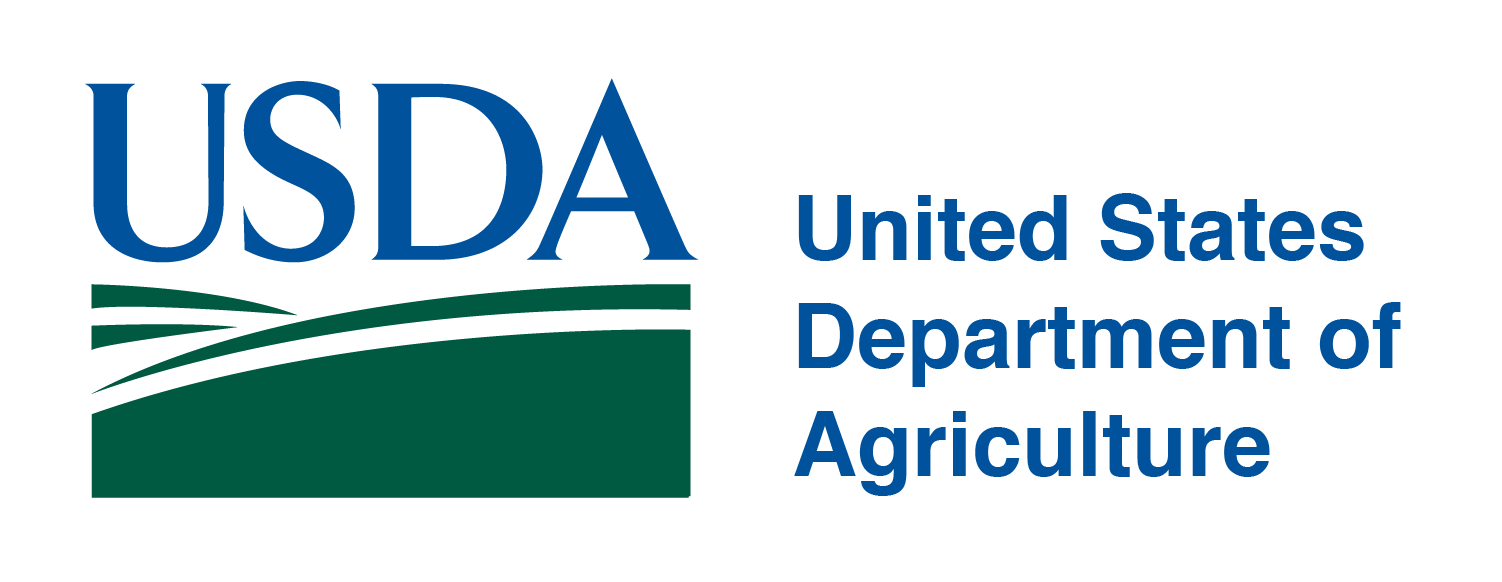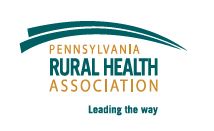- Social Factors Help Explain Worse Cardiovascular Health among Adults in Rural Vs. Urban Communities
- Reducing Barriers to Participation in Population-Based Total Cost of Care (PB-TCOC) Models and Supporting Primary and Specialty Care Transformation: Request for Input
- Secretary Kennedy Renews Public Health Emergency Declaration to Address National Opioid Crisis
- 2025 Marketplace Integrity and Affordability Proposed Rule
- Rural America Faces Growing Shortage of Eye Surgeons
- NRHA Continues Partnership to Advance Rural Oral Health
- Comments Requested on Mobile Crisis Team Services: An Implementation Toolkit Draft
- Q&A: What Are the Challenges and Opportunities of Small-Town Philanthropy?
- HRSA Administrator Carole Johnson, Joined by Co-Chair of the Congressional Black Maternal Health Caucus Congresswoman Lauren Underwood, Announces New Funding, Policy Action, and Report to Mark Landmark Year of HRSA's Enhancing Maternal Health Initiative
- Biden-Harris Administration Announces $60 Million Investment for Adding Early Morning, Night, and Weekend Hours at Community Health Centers
- Volunteer Opportunity for HUD's Office of Housing Counseling Tribe and TDHE Certification Exam
- Who Needs Dry January More: Rural or Urban Drinkers?
- Rural Families Have 'Critical' Need for More Hospice, Respite Care
- Rural Telehealth Sees More Policy Wins, but Only Short-Term
- States Help Child Care Centers Expand in Bid To Create More Slots, Lower Prices
HRSA Invests More Than $80 Million to Help Rural Communities Respond to Fentanyl and Other Opioid Overdose Risks

The U.S. Department of Health and Human Services’ (HHS) Health Resources and Services Administration (HRSA) announced more than $80 million in awards to rural communities in 39 states to support key strategies to respond to the overdose risk from fentanyl and other opioids. These awards help advance President Biden’s commitment to beat the opioid epidemic as part of his Unity Agenda for the nation.
HRSA funding will support interventions such as distributing the lifesaving overdose reversal drug naloxone to prevent overdose; creating and expanding treatment sites in rural areas to provide medications to treat opioid use disorder; expanding access to behavioral health care for young people in rural communities; and, caring for infants in rural areas who are at-risk for opioid exposure or experiencing symptoms related to opioid exposure.
“Far too many rural families have faced the devastation of overdose, and these deaths are felt deeply across rural communities – where often everyone knows someone lost too soon,” said HRSA Administrator Carole Johnson. “At the Health Resources and Services Administration, we know that funding based on population size or other broad-based rubrics can miss the vital treatment and response needs of rural communities. That’s why the investments we are announcing today are targeted to rural communities and tailored to the unique challenges of helping rural health care leaders expand access to treatment and build recovery pathways to prevent overdose.”
More than 100,000 people die each year from overdose. Individuals who call rural communities home and who are experiencing opioid use disorder – including from fentanyl, heroin or other opioids – can face challenges in accessing treatment and recovery services. Geographic isolation and transportation barriers can make finding treatment particularly challenging and limited mental health and substance use disorder health care providers in the community can further complicate access. The stigmatization of substance use disorder and its treatments are additional barriers to access. HRSA’s funding is targeted to helping communities address these critical needs and expand access to services.
Today’s announcement includes the following investments:
- Expanding Access to Medication to Treat Opioid Use Disorder: $24 million will support 26 awards to rural communities to establish treatment sites for individuals to access medications to treat opioid use disorder. The use of medication to manage opioid use disorder is the standard of care, but not always readily available.
- Supporting Rural Communities in Preventing and Responding to Overdoses: $14 million will support 47 awards to help rural communities respond to their specific and immediate needs, including the distribution of life-saving opioid overdose reversal medications.
- Meeting the Behavioral Health Needs of Young People: Nearly $9 million will support 9 awards to focus on building, strengthening and expanding mental health and substance use disorder services for young people in rural communities to expand treatment and help prevent overdose.
- Preventing and Addressing Neonatal Exposure: Nearly $20 million will support 41 awards to develop and implement interventions in rural communities to prevent, treat and care for opioid exposed infants by focusing on systems of care, family supports, and social determinants of health.
- Investing in and Disseminating Best Practices: $10 million will support three Rural Centers of Excellence on Substance Use Disorders to disseminate treatment and prevention best practices to help inform rural communities’ response strategies, and $5 million will support evaluation of this overall initiative.
To view the full list of awardees, see https://www.hrsa.gov/rural-health/opioid-response/fy2023-rcorp-awards-overview.
To learn more about the RCORP program, visit the RCORP Webpage.
CMS Launches ‘Birthing-Friendly’ Designation on Web-Based Care Compare Tool
The Centers for Medicare & Medicaid Services (CMS) will begin displaying the ‘Birthing-Friendly’ designation icon on CMS’s Care Compare online tool. CMS created the new designation to identify hospitals and health systems that participate in a statewide or national perinatal quality improvement collaborative program and that implement evidence-based care to improve maternal health. The public can use the Care Compare tool — along with a complementary interactive map — to find a hospital or health system with the ‘Birthing-Friendly’ designation in their area. Today’s action is one of many key efforts being implemented as part of the White House Blueprint for Addressing the Maternal Health Crisis and is part of Vice President Harris’ nationwide call to action to reduce maternal mortality and morbidity. It also meets a milestone in the CMS Maternity Care Action Plan.
“Today’s launch of the ‘Birthing-Friendly’ designation is another important step to increase and further ensure access to high-quality maternity care,” said Vice President Kamala Harris. “America’s maternal mortality rates are the highest in the developed world, and in response, President Biden and I have made it a key priority to address this crisis by directing government agencies to come up with deliberate and actionable plans. We will always remain committed to supporting the health and well-being of all women, their families, and communities across the nation.”
“Tackling the maternal health crisis is a top priority for the Biden-Harris Administration. We are doing everything in our power to help pregnant and postpartum people find high-quality maternity care. The hospitals and health systems that are designated as ‘Birthing-Friendly’ are an important tool for consumers in their search for first rate care,” said HHS Secretary Xavier Becerra. “We will continue to take action to further advance maternity care quality, safety, and equity.”
“It’s important to center CMS’ work in actions that are results-driven and empower the people we serve. The ‘Birthing-Friendly’ designation is part of our ongoing efforts to improve maternal health in the U.S.,” said CMS Administrator Chiquita Brooks-LaSure. “By highlighting hospitals and health systems demonstrating a strong commitment to maternity care quality, the ‘Birthing-Friendly’ designation is one powerful example of how we are centering health equity in everything we do. As maternal health inequities persist across the nation, the designation offers a tangible marker of the evidence-based practices that hospitals and health systems can pursue to close these gaps and ultimately provide the kind of care all expectant parents deserve.”
Eighty percent of pregnancy-related deaths are preventable, and Black, American Indian and Alaska Native, and Native Hawaiian and Pacific Islander people have the highest rates of pregnancy-related death. Pregnant and postpartum people from some racial and ethnic minority groups are also more likely to have negative health care experiences during pregnancy and delivery that impact the quality of care they receive and health outcomes. The ‘Birthing-Friendly’ designation is a step towards ensuring that all pregnant and post-partum people can find high-quality maternity care.
Last December, CMS hosted the agency’s first-ever Maternal Care Health Convening with government and industry leaders, where more than two dozen health plans committed to using the ‘Birthing-Friendly’ designation on their consumer websites, collectively reaching over 150 million people.
Today’s announcement is the latest in a series of actions CMS has pursued to further advance maternity care quality, safety, and equity. The Biden-Harris Administration has prioritized maternal health, including by urging all states, Washington, D.C., and all U.S. territories to offer pregnant people and their families the relief of continuous postpartum coverage. Through the American Rescue Plan Act (ARP) of 2021, which allows states to provide continuous Medicaid and Children’s Health Insurance Program (CHIP) coverage for an entire year after pregnancy, CMS has approved Medicaid postpartum coverage extensions in 39 states plus Washington, D.C. and the Virgin Islands.
Visit Medicare.gov/care-compare to see hospitals with the ‘Birthing-Friendly’ designation.
HHS Honors Alzheimer’s Awareness Month

The HHS Office of Minority Health joins federal partners this month in raising awareness of Alzheimer’s disease and its impact on the health of racial and ethnic minorities. According to the most recent data available from the Centers for Disease Control and Prevention (CDC), Alzheimer’s disease was one of the 10 leading causes of death in 2021. Racial and ethnic minority and Tribal communities often face discrimination when seeking health care for Alzheimer’s disease and related dementias. Findings from two national surveys show that Black Americans reported the highest level of discrimination in dementia health care followed by Native Americans, Asian Americans, and Hispanic Americans.
In an effort to implement public health strategies that promote brain health, the Healthy Brain Initiative was created in 2005 to guide public health action. The newly released Healthy Brain Initiative: State and Local Road Map for Public Health, 2023-2027 from the Alzheimer’s Association and the CDC builds on previous work and guides public health professionals through expert-developed actions to help address brain-health in their communities. Visit the CDC’s website to learn more and access the plan.
USDA Rural Development’s Community Facilities Program Accepting Applications for FY 2024 Funding
Please read the information below to see how USDA Rural Development can help your community!
The Community Facilities Program provides affordable funding to develop essential community facilities in rural areas under 20,000 population. The loan rate is currently 3.875% and would be fixed for the life of the loan. Terms can be up to 40 years for acquisition or renovation of real estate and the useful life of equipment purchased. This loan program has no fees or prepayment penalties and does not require prevailing wages.
CF video (lumen5.com) Check out this video of for more information on the Community Facilities program and great projects USDA Rural Development has funded in PA.
See below for more examples of recent projects funded through our program in Pennsylvania.
USDA Rural Development Community Facilities Loan & Grant Program and Pennsylvania Nonprofits
What can Rural Development do for your organization and community?
- Purchase, construct, and/or improve essential community facilities, and pay related eligible project expenses
- Computer and technology upgrades
- Construction, acquisition, or rehabilitation of facilities an ADA compliance
- Parking and paving improvements
- HVAC equipment, electrical upgrades, emergency generators
- Interior improvements
- Training equipment
Examples of Projects in Pennsylvania include:
- LifeQuest Assisted Living in Bucks County received a Community Facilities Direct Loan of $39.9 Million to construct 123 new assisted living units and renovation of the existing nursing center to implement a 10-15 bed memory care unit.
- Bear Creek Foundation in Luzerne County received a Community Facility Direct Loan of $11.4 Million to construct a 36,000 square-foot addition to its existing charter school.
- Meadville Public Library in Crawford County received a Community Facility Direct Loan and Grant of $132,460 for a roof replacement.
- Big Valley Ambulance Club, Inc in Mifflin County received a Community Facilities Direct Loan and Grant of $128,200 for the purchase of a 2023 Life Line Victory liner ambulance.
- Penn Township in Clearfield County received a Community Facilities Direct Loan and Grant of $85,000 for the purchase of a Freightliner chassis with dump box and appurtenances.
- Sutersville Volunteer Fire Company in Westmorland County received a Community Facility Direct Loan and an Economic Impact Initiative Grant of $187,700 to purchase a new pumper truck, hose and spreader package for the fire department.
Please note that all applications are considered as loan only first. Grant funding is awarded based on financial need, availability of funds, and are a maximum of $50,000.
For more information on our program and how to apply, contact:
Crawford, Erie, Forest, Venango & Warren Counties
Courtney Bailey – Courtney.Bailey@usda.gov #814-547-5938
Allegheny, Armstrong, Beaver, Butler, Greene, Lawrence, Mercer & Washington Counties
Keith Lehman – Keith.Lehman@usda.gov #724-482-5289
Clarion, Fayette, Indiana, Jefferson & Westmoreland Counties
Eli Bratich – Eli.Bratich@usda.gov #724-482-5283
Blair, Cambria & Somerset Counties
Ron Moore – Ronald.Moore3@usda.gov #724-261-3891
Cameron, Columbia, Centre, Clearfield, Clinton, Elk, Lycoming, McKean, Montour, Northumberland, Potter, Snyder, Sullivan, Tioga and Union Counties
Judy Bartlett – Judy.Bartlett@usda.gov #570-749-3051
Bradford, Lackawanna, Luzerne, Susquehanna, Wayne & Wyoming Counties
Charles Garnett – Charles.Garnett@usda.gov #570-836-5111, x121
Berks, Bucks, Carbon, Chester, Lancaster, Lehigh, Monroe, Montgomery, Northampton, Pike, Schuylkill & Philadelphia Counties
Tonya St. Clair – Tonya.Stclair@usda.gov #484-795-7614
Adams, Bedford, Fulton, Franklin, Huntingdon, Juniata & Mifflin Counties
Ana Liza Setters – Analiza.Setters@usda.gov #717-601-3247
Cumberland, Dauphin, Delaware, Lebanon, Perry & York Counties
Melissa Kuhns – Melissa.Kuhns@usda.gov #717-601-3245
Revised Rural Health Value Catalog of Value-Based Initiatives Released

The Rural Health Value team is pleased to share updates to the Catalog of Value-Based Initiatives for Rural Providers. Two new models are now included: AHEAD and GUIDE
Catalog of Value-Based Initiatives for Rural Providers
This catalog summarizes rural-relevant, value-based programs primarily by the Centers for Medicare & Medicaid Services (CMS) and its Center for Medicare & Medicaid Innovation (CMMI), to help rural leaders and communities identify HHS value-based programs appropriate for rural participation.
The following models are now included in the catalog:
States Advancing All-Payer Health Equity Approaches and Development Model (AHEAD) – a state total cost of care model that seeks to drive state and regional health care transformation and multi-payer alignment, with the goal of improving the total health of a state population and lowering costs. CMS will release a Notice of Funding Opportunity in late Fall 2023, with applications due in Spring 2024.
Guiding an Improved Dementia Experience (GUIDE) – participants in the GUIDE Model will establish dementia care programs (DCPs) that aim to improve quality of life for people with dementia, help them remain in their homes and communities, and reduce strain on their unpaid care givers. A Request For Applications was released in Fall 2023, with model launch July 2024.
Related resources on the Rural Health Value website:
- Rural Community Engagement Resource Guide – Provides rural health care leaders a variety of toolkits, strategies, and information to help initiate, improve, and inspire community engagement strategies that support value. The accompanying infographic highlights strategies for community engagement and benefits aligned with value-based care (2023)
- Demonstrating Your Value: A Guide to Potential Value-Based Care Partnerships for Rural Health Care Organizations – This Rural Health value resource assists CAH leadership in demonstrating the value CAHs bring to networks, affiliations, payers, community-based organizations, or accountable care organizations (updated 2023)
New Report Provides Medicare Advantage Enrollment Update for 2023

New from the RUPRI Center for Rural Health Policy Analysis
Medicare Advantage Enrollment Update 2023
Edmer Lazaro, DPT, MSHCA; Fred Ullrich, BA; and Keith Mueller, PhD
The Rural Policy Research Institute (RUPRI) continues to monitor MA enrollment trends and how it is influenced by changes in health policies. More MA plans are being offered in 2023 than in any other year, indicating the appeal of this program for insurers throughout the country. The MA program delivers the program’s benefits to 53.9 percent of metropolitan beneficiaries, and the current rate of growth shows similar trends among nonmetropolitan enrollees. Such plans are attractive because they typically offer extra benefits, often with no additional premium. As the market continues to grow and enrollment rates in MA increase, researchers should continue to examine how well the MA program serves its beneficiaries, especially those living in nonmetropolitan areas. Changes in the MA program highlight the importance of developing policies that aim at improving care access for nonmetropolitan enrollees.
Click here to read the full report.
USDA Report Analyzes Three of Its Rural Broadband Programs and Their Reach

A new report from the U.S. Department of Agriculture examines three broadband programs and if they were able to reach the target audiences.
The report looked at three programs: The Broadband Initiatives Program (BIP) was the largest of them in terms of funds obligated during the study period, with about $3.6 billion in grants and loans in Fiscal Year 2010. ReConnect obligated $1.5 billion in grants and loans from Fiscal Year 2019 to Fiscal Year 2021, and Community Connect obligated $253 million in grants from Fiscal Year 2009 to Fiscal Year 2021.
“The populations served by all three programs tended to be more rural, less educated, poorer, and older than those in areas not served (for BIP) or ineligible (for Community Connect and ReConnect),” the report stated. “All programs reached a larger share of the American Indian/ Alaska Native (AIAN) and White populations than other races and a larger share of the non-Hispanic than Hispanic population.”
However, only 10% of AIANs who lived in areas eligible for ReConnect in 2020 were in approved project services areas, the lowest percentage for any racial group. This resulted from a low percentage of the eligible AIAN population in areas proposed to be served in ReConnect applications and not from a greater share of AIANs in areas that would have been served by rejected or withdrawn applications.
“Outreach and technical assistance efforts may help address some of the observed differences across racial and ethnic groups in their tendency to be included in applications to broadband programs and in their likelihood of having applications approved,” the report stated.
Brian Whitacre, a professor and Jean & Patsy Neustadt Chair in the department of Agricultural Economics at Oklahoma State University, said he was pleased to see a report that looks at outcomes.
“In the past, we’ve had all these federal broadband programs, and we’ve never really done an analysis of where that money is going,” he told the Daily Yonder.
This report, he said, looks at whether the money is going to the people it’s intended to.
Read the full article on The Daily Yonder website.
Pennsylvania Gov. Josh Shapiro Proclaims November 13-17, 2023 Rural Health Week in Pennsylvania

In an effort to draw attention to the wide range of issues that impact rural health, Gov. Josh Shapiro has declared November 13-17, 2023, as Rural Health in Pennsylvania week at the request of the Pennsylvania Rural Health Association (PRHA).
Gov. Shapiro made the proclamation to promote awareness of the full range of issues that impact rural health care throughout the Commonwealth and the health status of rural Pennsylvanians. Nationally, Pennsylvania ranks as one of the states with the highest number of rural residents, with 26 percent of Pennsylvanians residing in rural areas. In recognition of Pennsylvania’s diverse rural needs, the Commonwealth has supported the development of the Center for Rural Pennsylvania, the Pennsylvania Office of Rural Health, and other agencies and initiatives to address the needs of rural Pennsylvanians.
The week encompasses November 16, which is National Rural Health Day, established in 2011 by the National Organization of State Offices of Rural Health (NOSORH) to showcase rural America; increase awareness of rural health issues; and promote the efforts of NOSORH, State Offices of Rural Health (SORHs) and others in addressing those issues.
“Nearly 59.5 million Americans, including 3.4 million Pennsylvanians, live in rural communities,” said Lisa Davis, PORH director and outreach associate professor of health policy and administration at Penn State. “These small towns and communities continue to be fueled by the creative energy of citizens who step forward to provide a wealth of products, resources, and services.
Rural communities also face unique health care concerns: a lack of providers; accessibility issues, particularly in terms of transportation and technology; and affordability issues as the result of larger percentages of uninsured and underinsured citizens and greater out-of-pocket health costs. Rural hospitals and health care providers, which frequently are the economic backbone of the communities they serve, deserve special consideration so that they can continue to provide high-quality services and meet the needs of rural residents.”
To celebrate the work being done to achieve health care access and equity in Pennsylvania, the Pennsylvania Office of Rural Health will present Pennsylvania Rural Health Awards during virtual ceremonies across rural Pennsylvania.
PRHA is dedicated to enhancing the health and well-being of Pennsylvania’s rural citizens and communities. Through the combined efforts of individuals, organizations, professionals, and community leaders, the Association is a collective voice for rural health issues and a conduit for information and resources. More information can be found at paruralhealth.org.
Editors: For additional information, please contact Lisa Davis, Director, Pennsylvania Office of Rural Health, at 814-863-8214 or lad30@psu.edu.
The U.S. Department of Labor Publishes Comprehensive CHW Job Profile
The U.S. Department of Labor has published a comprehensive “profile” of the job of a Community Health Worker (CHW.) The profile, which was developed with input from the Health Resources and Services Administration (HRSA), includes: a standard job description; wage information for numerous states and localities; and training and education requirements.
Can Rural Voters Be Swayed at the Ballot Box?
While partisanship remains strong among rural voters, certain messages resonated with voters across the political spectrum. They included battling inflation, bringing good-paying jobs to local communities, and battling corporate greed.
Could Democratic candidates, whose support among rural voters has waned considerably over the past two decades, regain some support utilizing these messages?
Big Takeaways
- The survey suggests as many as 37% of rural voters are swing blue-collar voters who could be swayed by the certain policy proposals and messaging.
- While partisanship remains strong among the rural electorate, voters were aligned on many of their chief concerns: affordable housing, the high cost of food, and corporate greed.
- Three messaging points — lowering prices; bringing good-paying jobs to local communities; and a populist message focused on corporate greed — received such broad support that they rivaled voters’ agreement on core values like family and freedom.
- President Joe Biden is viewed 18 points more unfavorably than Donald Trump, suggesting the Democratic Party has a lot of work ahead if they plan to move rural swing voters.
The Numbers
- 51 percent of Democrats thought the economy was working well for them, compared to 17 percent of Republicans.
- Respondents were asked to pick two issues from a list of 14 that were the most important for themselves and their families. The respondents could also choose “other,” “none,” or “not sure.
- 54% chose the rising cost of living as one of their most important issues, followed by retirement and Social Security (25 percent), health care (19 percent), dysfunction in government (15 percent), and jobs and the economy (15 percent).
- Respondents were asked to pick two concerns from a list of 11 that were the most important for themselves and their families. The respondents could also choose “other,” “none,” or “not sure.
- 43% chose the rising cost of food as one of their most important issues, followed by rising gas prices (24 percent), rising energy costs (21 percent), rising housing costs (19 percent), and a lack of good-paying jobs (18 percent).
Click here to read the full report.


